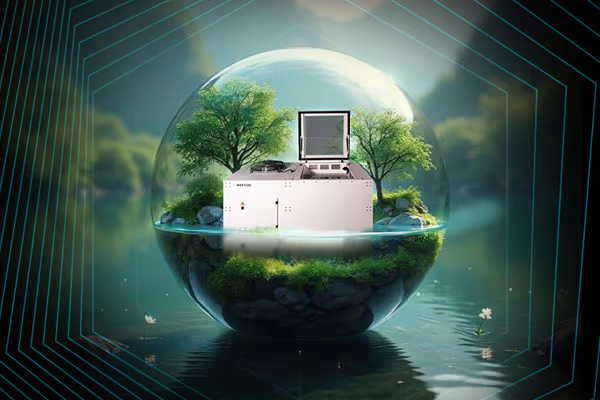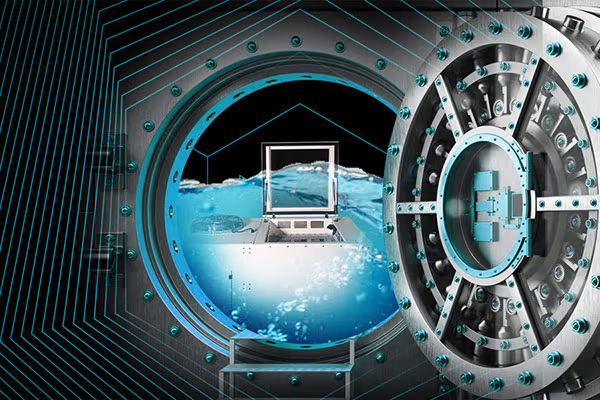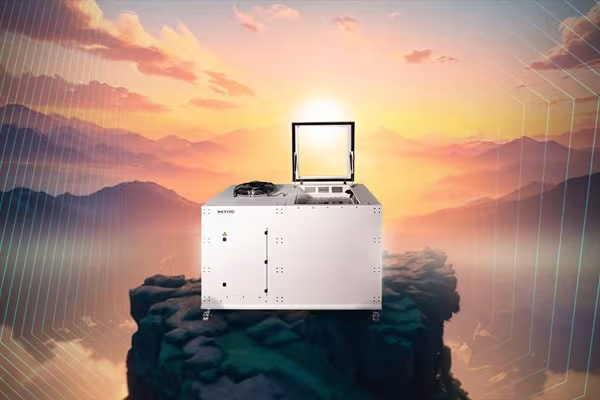
How Immersion Cooling Is Transforming Data Center Services Across the EU
As demand for compute skyrockets driven by AI, cloud services and edge applications, Europe’s data center industry faces two simultaneous pressures: deliver higher compute density and reduce environmental impact. Immersion cooling has moved from niche experiment to a practical, scalable solution that’s reshaping data center services across the EU. In this article we’ll explain what immersion cooling is, why it matters for European data centers, the benefits and trade-offs and how operators can adopt it as part of a green, competitive hosting strategy.
What is immersion cooling (brief primer)?
Immersion cooling is a liquid-based cooling approach in which servers or server components are submerged in a dielectric (non-conductive) cooling fluid. Heat transfers directly from the hardware into the fluid, which is then circulated and cooled, sometimes in a closed loop that reuses or rejects heat. There are single-phase systems (fluid remains liquid) and two-phase systems (fluid changes phase to vapor and then condenses). Compared to air cooling, immersion provides much higher heat transfer efficiency and enables compact, high-density racks.
Why immersion cooling is timely for the EU
1. Energy and water pressures are rising
Recent surveys and regional studies show data centers are already a meaningful share of European electricity demand and that demand will rise as AI and cloud growth continue. The EU and national bodies are increasingly focused on curbing energy use and emissions in digital infrastructure. The EU is preparing energy-efficiency measures that specifically target data centers. These regulatory and social pressures make high-efficiency cooling solutions like immersion very attractive.
2. Compute density and new workloads
AI and specialized accelerators (GPUs, TPUs) concentrate waste heat in dense racks. Traditional air-cooling struggles with these densities without significant power and space increases. Immersion cooling handles high-density racks more naturally, enabling more compute per square meter and avoiding expensive overhauls to air-flow and CRAC infrastructure.
Measurable benefits for data center services
Energy & emission reductions
Life-cycle analysis by major cloud operators and recent academic work show direct and system-level benefits. For example, Microsoft’s lifecycle assessment found that moving from air cooling to direct liquid methods (cold plates or immersion) can reduce greenhouse gas emissions and energy demand roughly 15–21% and water consumption by ~30–50% (results depend on scenario). These life-cycle gains matter because they count manufacturing and electricity-grid effects, not just immediate PUE improvements. Source

Lifecycle impacts of datacenter cooling techniques - immersion and cold-plate options reduce energy and water use vs. traditional air cooling.
What this means for EU data center services: lower operational costs, stronger sustainability claims, and improved compliance with upcoming EU expectations on data center energy use. Reuters
Higher density, smaller footprint
Immersion reduces the need for large chilled-air handling infrastructure and often shrinks the floor space required per rack by allowing much higher kW/rack. That creates options for urban or constrained sites (e.g., Athens, Thessaloniki) where land is expensive or retrofitting conventional HVAC is challenging.
Water savings
Where water scarcity or grid water costs are concerns, immersion and other liquid methods can reduce water used directly for cooling (and indirectly in grid generation) - important across Mediterranean climates and southern EU regions. Microsoft’s LCA quantified major reductions in water consumption versus air cooling in many scenarios.
Better TCO for high-density workloads
Although upfront costs for immersion racks and redesign can be higher, total cost of ownership improves when energy, space, and cooling infrastructure savings are accounted for - especially for operators running GPU-heavy, always-on workloads. Market reports show strong CAGR for immersion cooling as enterprises and hyperscalers seek these savings. Global Market Insights Inc.
Real-world adoption in Europe (who’s doing it and why it matters)
Several specialized vendors and data center projects in Europe have already tested or deployed immersion solutions - vendors include established names like CoolBlock, Fujitsu, Green Revolution Cooling (GRC), LiquidStack, Submer and others. Data Center Frontier and industry analyses document pilot projects and commercial rollouts aimed at AI clusters, HPC and modular data centers. This vendor/ecosystem maturity reduces deployment risk for European operators. datacenterfrontier.com
Why regional adoption matters: When European operators adopt immersion at scale, it creates European supply chains (installation, fluids, maintenance), local standards and case studies, which in turn lowers barriers for other local hosts (including Greek providers) to follow suit. This supports EU goals for energy efficiency and digital sovereignty. CERRE
Trade-offs and hurdles operators must consider
- Upfront engineering & retrofits: Converting an existing air-cooled facility to immersion is non-trivial; some operators prefer greenfield or modular deployments. Planning, rack design and mechanical integration require specialized engineering. Science Direct
- Vendor lock / hardware warranty considerations: Immersion often needs vendor agreements or custom warranty terms. Some hardware vendors now support immersion, but checking compatibility is essential.
- Standards & metrics: Traditional KPIs like PUE understate the benefits of liquid cooling; life-cycle and system-level metrics (energy demand, carbon intensity, water usage across supply chains) must be used for an accurate picture. vertiv.com
- Operational expertise: Maintenance, leak management and fluid handling require training and new operational protocols. Over time, though, mature vendors and integrators reduce the learning curve. datacenterfrontier.com
How immersion cooling transforms customer-facing data center services
1. New product tiers (high-density hosting and AI-ready VPS/colocation)
Operators can offer specialized, “AI-ready” co-location and VPS tiers that guarantee higher density and lower energy carbon footprints, attractive to ML/AI customers and HPC researchers.
2. Sustainability-driven SLAs and reporting
With measurable life-cycle benefits, operators can include energy and water metrics in SLAs or sustainability reports, useful for enterprise buyers with procurement sustainability requirements and for public-sector clients under EU rules.
3. Geographic advantage for EU/regional hosting
Greece and other EU countries can market immersion-enabled facilities as green, low-latency alternatives to distant hyperscale clouds. For regional industries (finance, healthcare, public sector) concerned about data sovereignty and GDPR, locally hosted, low-carbon compute is a compelling proposition.
Practical next steps for EU data center operators & hosting providers
- Pilot, measure, iterate: Start with modular immersion pods for AI clusters or HPC customers - measure life-cycle benefits and TCO before wider rollout. datacenterfrontier.com
- Use life-cycle metrics: Adopt LCA-style KPIs (energy demand, GHG, water across production + operations) in addition to PUE. Microsoft’s LCA approach is a good model. Source
- Partner with experienced vendors: Choose immersion vendors with European deployment experience and local service capabilities to simplify maintenance and compliance. datacenterfrontier.com
- Communicate sustainability clearly: Offer customers transparent reporting (emissions, energy and water savings) as part of product marketing, this drives procurement preference in the EU market. Reuters
Immersion cooling as an EU data center differentiator
Immersion cooling is a practical tool that helps EU data centers achieve higher compute density, lower lifecycle energy and water use and stronger sustainability positioning. For operators in Greece, the EU and beyond, immersion offers a path to host AI and HPC workloads efficiently while aligning with tightening energy and emissions expectations. The companies that pilot with smart metrics and transparent reporting will win enterprise customers who need performance, compliance and sustainability, all at once.
Get in touch with our experts!
Follow us on social media for company’s updates and industry news 👇








